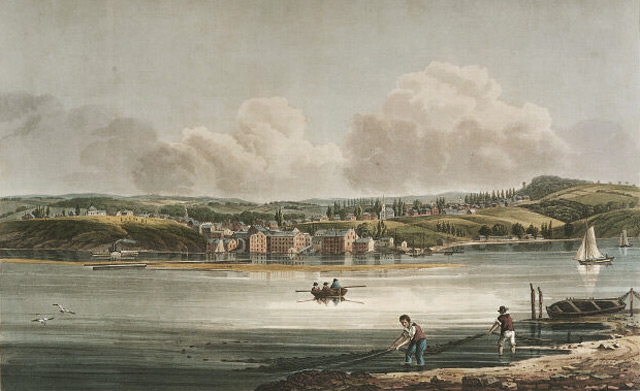Like its home city, the prison in Hudson has had a long and varied history. Opened in 1887 as a “house of refuge,” or reformatory, for women aged 15 – 30, it was the only prison at that time in New York for state-sentenced women. Prisoners were sent there for offenses like prostitution and disorderly conduct for five-year, then later 3-year indeterminate terms. The House of Refuge For Women closed following a series of scandals and a declining population. But from 1904 to 1975, the prison became part of the state’s juvenile justice system, housing ‘incorrigible’ girls aged 12-15. When the NYS Training School for Girls closed in 1975, the Hudson prison experienced its last and most radical change. In 1976 it was taken over by the state Department of Corrections as a minimum-security then later a medium-security prison for adult male felons. Today, despite being short-listed for closure by the state over the last few years, Hudson Correctional Facility remains open.
- House of Refuge for Women, 1887–1904
- The dungeons are damp and cold, 1899
- House of Refuge for Women founder inspires New York City’s first monument dedicated to a woman, 1912
— NY State Training School for Girls —
- New York State Training School for Girls, 1904–1975
- The more things change, the more they stay the same…or do they?, 1906
- Investigating the girls training school: The Delaney Report, 1915
- She was incorrigible, 1920s
- Bearing witness, 1920s
- Delinquent Girls Need to Farm, 1920s
- First letter home, 1930
- They are all Ellas, 1930s
- Suffer Little Children, 1940s
- Where is Margo Bake?, 1949
- Gloria’s Memories, 1950s
- Timothy Dunleavy: Understanding and Preserving a Community’s Heritage, 1960s
- Thomas Tunney: No place to go but up…, 1964-1972
- How Jan Kerouac ‘escaped’ the Girls Training School, late 1960s
- Karen Depyster: Happy childhood, broken homes, 1968
- Mary Allen: Why is it important to “remember”?, 1970s
- Closure of the Girls Training School, 1975



